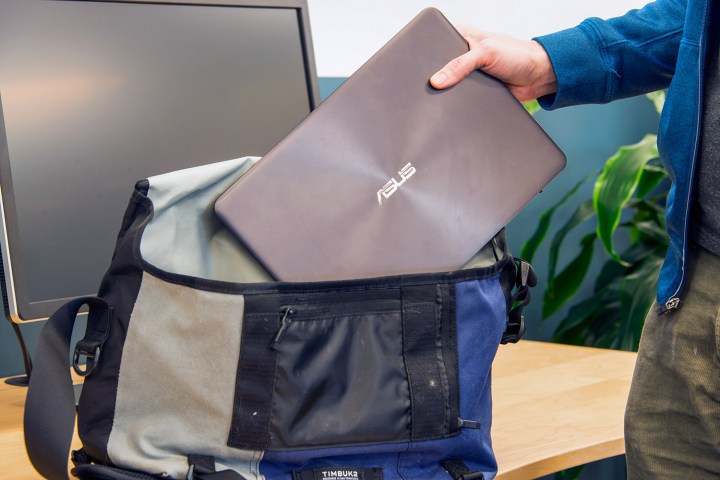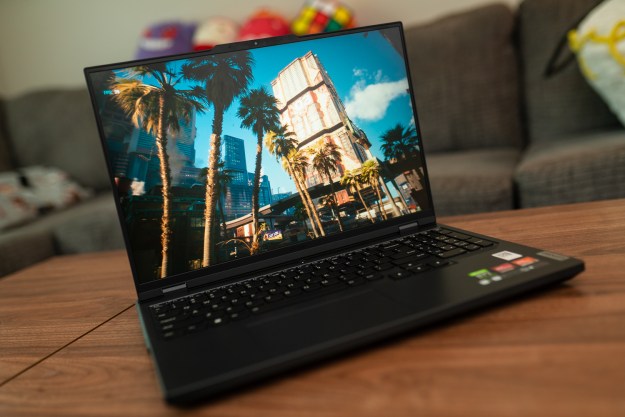
Proper equipment is key if you’re covering or attending a conference of this magnitude. Good shoes are a must. A cell phone charger, or spare battery, is a necessity. A mobile Internet hotspot never hurts, as Wi-Fi struggles to cope with the thousands of devices roaming every hall. And then, of course, there’s your laptop.
As editor of Digital Trends’ computing section, I have plenty to choose from. Microsoft’s Surface Pro 4 and Surface Book are still on long-term loan. Several Dells, including the award-winning XPS 13, sit at the ready. A MacBook Air 13, used for testing and review of OS X, is always available. But I’ve decided on a humble system this year, one you can buy for $700.
The Asus Zenbook UX305CA is my choice.
The UX305CA is a testament to the capability of Intel’s Core M processor.
While the system did win our Editors’ Choice award, it’s not the obvious choice. Its specifications reflect its position as an entry-level Ultrabook. An Intel Core m3-6Y30 with a base clock of just 900MHz (yep, that’s right – less than 1GHz!) is paired with 8GB of RAM and an anemic version of Intel HD graphics. The battery is just OK, too. The system lasted 7 hours in our Web browsing loop. Not bad, but less than a Dell XPS 13 or MacBook Air.
Yet the UX305CA has traits that aren’t conveyed in benchmarks. The 1080p display is an example. While technically inferior to the 3,200 × 1,800 pixel panel optioned on the XPS 13 we reviewed, the UX305CA’s screen has a matte coat. Glare is never an issue, a critical trait under the conference’s bright showroom lights.
I’ve also fallen in love with the UX305CA’s passive cooling. The fact that it’s silent doesn’t matter much at CES, but ditching vents for the system fan has let Asus design a system that’s thin across its entire length. It stays cool, too, so it’s comfortable to use no matter how it’s held.
Perhaps the biggest advantage, though, is weight. The Zenbook UX305CA is 2.7 pounds, about equal to the Surface Pro 4 with Type Cover attached. Even the power brick is small, and weighs just a few additional ounces. That’s critical. Every ounce of weight matters when it’ll be carried all day.
Oh, and did I mention the keyboard is among the best? Yea. If I’m going to spend my days knocking out articles from a cramped press room or a bench outside a press suite, it’s going to be on the UX305CA.
Choosing to schlep this Ultrabook across the show floor is a testament to Asus’s engineering, and the capabilities of Intel’s Core M. Early review systems with the chip didn’t always perform well. The blame for that can be placed on the design of the first wave of Core M notebooks. Most had small batteries, which drastically offset the Intel chip’s power-sipping nature, and performance varied significantly even between systems with an identical processor.
The UX305CA proves that, when placed in a properly engineered chassis with a decent battery, Core M can shine. It also shows the choice of notebook you buy matters – a lot. Budget system have a bad reputation, and many of them are truly terrible. But not all. This Zenbook is proof an excellent rig doesn’t have to set you back nearly a grand.
Editors' Recommendations
- I’m a laptop reviewer, and I can’t wait for the new Windows on ARM laptops
- I replaced my gaming laptop with a Legion Go, and I’m not going back
- I’m worried about the Nvidia RTX 4080 Super
- Why I’m excited about Dell’s new 120Hz UltraSharp monitors
- I’m a laptop reviewer, and these were my biggest disappointments of 2023



